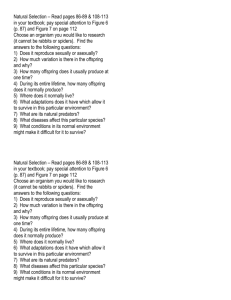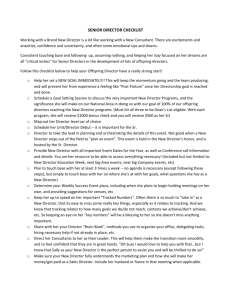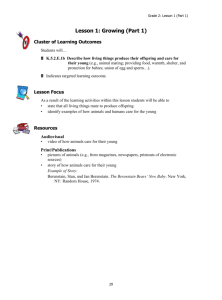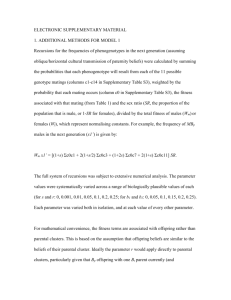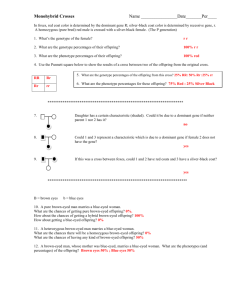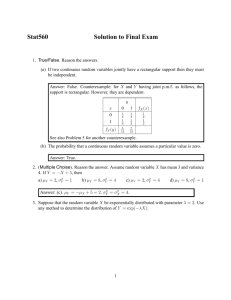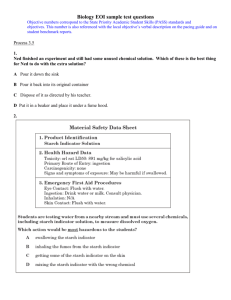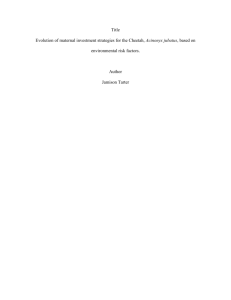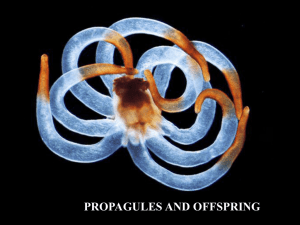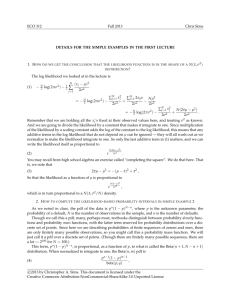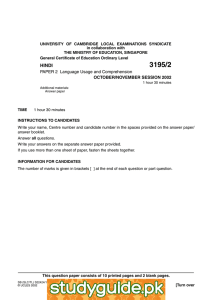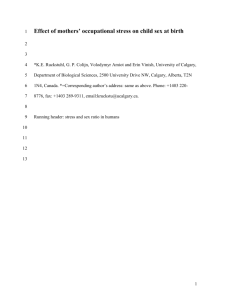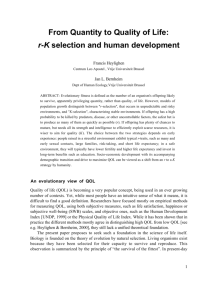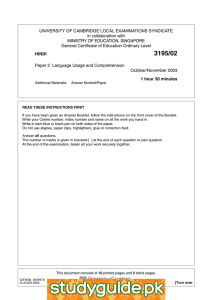doc
advertisement
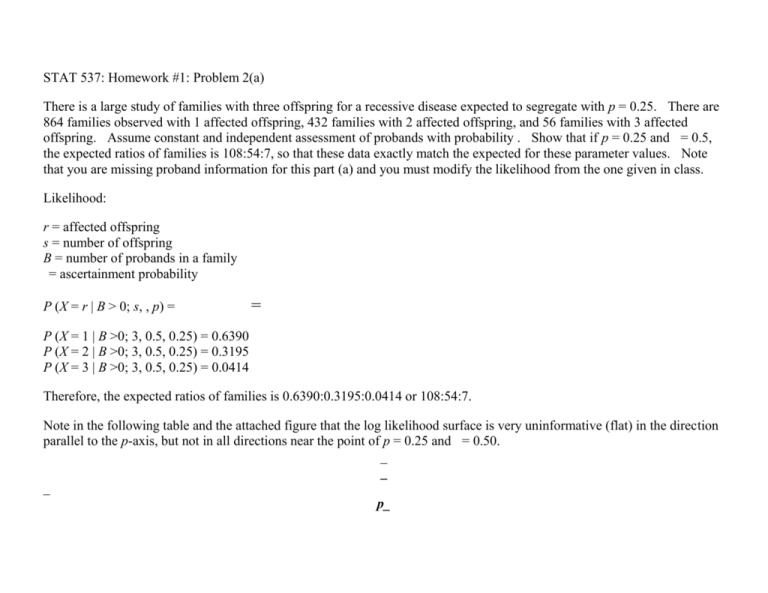
STAT 537: Homework #1: Problem 2(a)
There is a large study of families with three offspring for a recessive disease expected to segregate with p = 0.25. There are
864 families observed with 1 affected offspring, 432 families with 2 affected offspring, and 56 families with 3 affected
offspring. Assume constant and independent assessment of probands with probability . Show that if p = 0.25 and = 0.5,
the expected ratios of families is 108:54:7, so that these data exactly match the expected for these parameter values. Note
that you are missing proband information for this part (a) and you must modify the likelihood from the one given in class.
Likelihood:
r = affected offspring
s = number of offspring
B = number of probands in a family
= ascertainment probability
P (X = r | B > 0; s, , p) =
=
P (X = 1 | B >0; 3, 0.5, 0.25) = 0.6390
P (X = 2 | B >0; 3, 0.5, 0.25) = 0.3195
P (X = 3 | B >0; 3, 0.5, 0.25) = 0.0414
Therefore, the expected ratios of families is 0.6390:0.3195:0.0414 or 108:54:7.
Note in the following table and the attached figure that the log likelihood surface is very uninformative (flat) in the direction
parallel to the p-axis, but not in all directions near the point of p = 0.25 and = 0.50.
_
_
_
p_
0.45_
0.46_
0.47_
0.48_
0.49_
0.50_
0.51_
0.52_
0.53_
0.54_
0.55_
_
0.20_
-1071.69_
-1072.34_
-1073.00_
-1073.68_
-1074.38_
-1075.10_
-1075.83_
-1076.59_
-1077.36_
-1078.15_
-1078.96_
_
0.21_
-1066.05_
-1066.55_
-1067.07_
-1067.61_
-1068.16_
-1068.74_
-1069.33_
-1069.94_
-1070.56_
-1071.21_
-1071.88_
_
0.22_
-1061.98_
-1062.34_
-1062.71_
-1063.11_
-1063.52_
-1063.94_
-1064.39_
-1064.85_
-1065.34_
-1065.84_
-1066.36_
_
0.23_
-1059.38_
-1059.59_
-1059.83_
-1060.07_
-1060.34_
-1060.62_
-1060.92_
-1061.24_
-1061.58_
-1061.93_
-1062.31_
_
0.24_
-1058.17_
-1058.24_
-1058.32_
-1058.42_
-1058.54_
-1058.68_
-1058.84_
-1059.01_
-1059.20_
-1059.41_
-1059.64_
_
0.25_
-1058.26_
-1058.19_
-1058.13_
-1058.08_
-1058.06_
-1058.05_
-1058.06_
-1058.08_
-1058.13_
-1058.19_
-1058.27_
_
0.26_
-1059.60_
-1059.38_
-1059.18_
-1058.99_
-1058.82_
-1058.66_
-1058.52_
-1058.40_
-1058.30_
-1058.21_
-1058.15_
_
0.27_
-1062.14_
-1061.77_
-1061.42_
-1061.08_
-1060.76_
-1060.46_
-1060.18_
-1059.91_
-1059.66_
-1059.43_
-1059.21_
_
0.28_
-1065.81_
-1065.30_
-1064.80_
-1064.32_
-1063.85_
-1063.40_
-1062.97_
-1062.56_
-1062.16_
-1061.78_
-1061.41_
_
0.29_
-1070.59_
-1069.93_
-1069.29_
-1068.66_
-1068.04_
-1067.45_
-1066.87_
-1066.30_
-1065.76_
-1065.23_
-1064.71_
_
0.30_
-1076.44_
-1075.63_
-1074.84_
-1074.06_
-1073.30_
-1072.55_
-1071.82_
-1071.11_
-1070.42_
-1069.74_
-1069.07_
_
Splus code for table:
probX < function (pi, p, r, s) {(1 (1 pi) ^ r) * (pbinom (r, s, p) pbinom (r1, s, p))/(1 (1 pi*p) ^ s)}
LogLikeX < function (pi, p) {864*log (probX (pi, p, 1, 3)) +432*log (probX (pi, p, 2, 3)) +56*log (probX (pi, p, 3, 3))}
p < seq(0.20, 0.30, by=0.01)
names(p) < p
pi < seq(0.45, 0.55, by=0.01)
names(pi) < pi
z < outer(pi, p, LogLikeX)
z
SAS code for figure:
proc g3d data=figure;
plot pi*p=z/ xticknum=7 yticknum=7 zticknum=7;
run;






